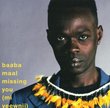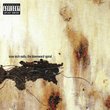| All Artists: Sofia Gubaidulina, Vladimir Kozhukhar, Beatrice Rauchs, Gidon Kremer Title: In the Mirror Members Wishing: 0 Total Copies: 0 Label: Bis Release Date: 6/18/2002 Album Type: Import Genre: Classical Styles: Chamber Music, Forms & Genres, Concertos, Historical Periods, Classical (c.1770-1830), Instruments, Keyboard, Strings Number of Discs: 1 SwapaCD Credits: 1 UPCs: 675754515720, 7318590008980 |
Search - Sofia Gubaidulina, Vladimir Kozhukhar, Beatrice Rauchs :: In the Mirror
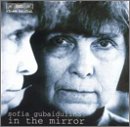 | Sofia Gubaidulina, Vladimir Kozhukhar, Beatrice Rauchs In the Mirror Genre: Classical
|
Larger Image |
CD DetailsSimilarly Requested CDs
|
CD ReviewsMostly minor works, with a glimpse at her early output Christopher Culver | 12/06/2004 (3 out of 5 stars) "IN THE MIRROR is a 2002 collection of three works by Sofia Gubaidulina, one clearly juvenalia, another from her early maturity, and the last from 1993 when she had already established herself as one of the greatest living composers. While nothing here is disappointment, the contents of this disc are minor works and the CD is not an essential purchase for Gubaidulina neophytes.
"Quintet for Piano, Two Violins, Viola, and Violoncello" dates from 1957, the third year of her studies at the Tchaikovsky Conservatory in Moscow. It is the second earliest piece the composer has retained in her official catalogue of works. The premiere performance was by the Komitas Quartet from Armenia with Gubaidulina herself playing the piano part. As this piece was written before Gubaidulina's entrance into the Russian Orthodox Church, there is none of the spiritual depths of her later, mature pieces. Instead, the Quintet is a vaguely Romantic piece with clear inspiration from Shostakovich. This is pleasant music, but most useful as a document of her youth. The one-movement piano concerto "Introitus" (1978) is a considerably more mature work, firmly rooted in Gubaidulina's interest in Christian mysticism. Like with many other compositions by Gubaidulina (such as "In Croce" for organ and cello, or the JOHANNES-PASSION), there is a contrast between the temporal/horizontal and the eternal/vertical. In the first portion of the work, the first theme the chamber orchestra is assigned represents Man, while the chromatic range is religious understanding. Gubaidulina goes on to develop a range of symbols too complex to describe here, but suffice it to say that this is a very good display of her spiritual aims in the art of composition. However, it does not rank with the best portions of her oeuvre and might be remembered as a minor work. The Kyiv Chamber Players conducted by Vladimir Kozhukhar give an admirable performance, though I was not very impressed by the piano playing of soloist Beatrice Rauchs. "Dancer on a Tightrope (Der Seiltaenzer)" for violin and piano was written in 1993. The violin represents a tightrope walker attempting to keep his balance, while the piano, first played on the strings with a glass tumbler, is a symbol of risk. It's an interesting experiment, though not as successful as most of Gubaidulina's work. Gidon Kremer, who first brought recognition to Gubaidulina in the West through his performance of her "Offertorium", plays excellently here, while Vadim Sakharov accompanies him well on piano. This performance was recorded live at the 1995 Lockenhaus Festival. There is another disc on BIS which collects more of that festival's performances of the music of Gubaidulina, as well as some pieces of Viktor Suslin, with whom she founded the traditional music ensemble Astreja. This would probably be a very poor introduction to Gubaidulina. For those who have never heard the music of this superlative composer, I'd recommend the JOHANNES-PASSION, her masterpiece and possibly the greatest work of Christian piety of our time, or the OFFERTORIUM disc in Deutsche Grammphon's "Echo 20/21" series. Leave IN THE MIRROR for when you've already become fascinated with her music." |

 Track Listings (6) - Disc #1
Track Listings (6) - Disc #1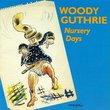
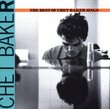
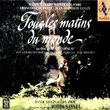
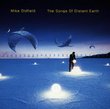

![Seussical [2000 Original Broadway Cast]](https://nationalbookswap.com/cd//m/02/4802/514802.jpg)
